Let's be smart shoppers and read our rinds.

Once we’re done enjoying prized Parmesan in soups and stews, atop pasta and salad, and in breading and meatballs, we have the rind. Some of us hold onto them in the freezer and then somehow remember to make broth out of them.
Some of us just look at the rind, puzzled, wondering what all that text is and if its secret messages are supposed to mean something to us cooks.
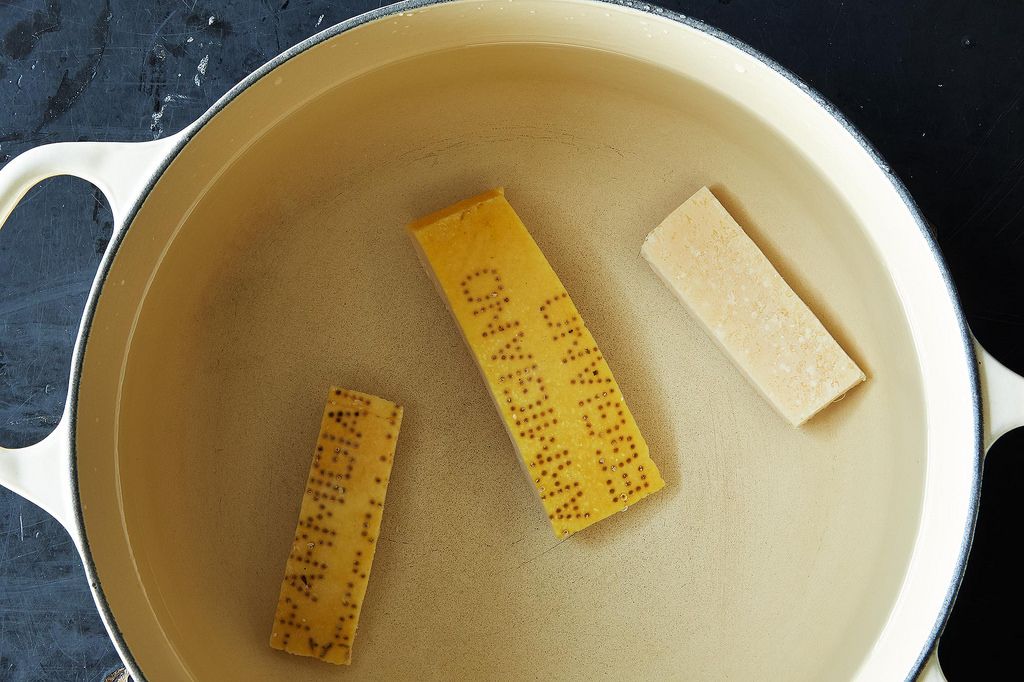
On a recent trip to Parma, I visited Marano Parmigiano-Reggiano factory and learned how they get the text on there and what it all means. Some of it is for quality control and some of it will be helpful to us when we're picking pieces of Parmesan. (The more you know, right?)
Here's how the text gets impressed on the rind:
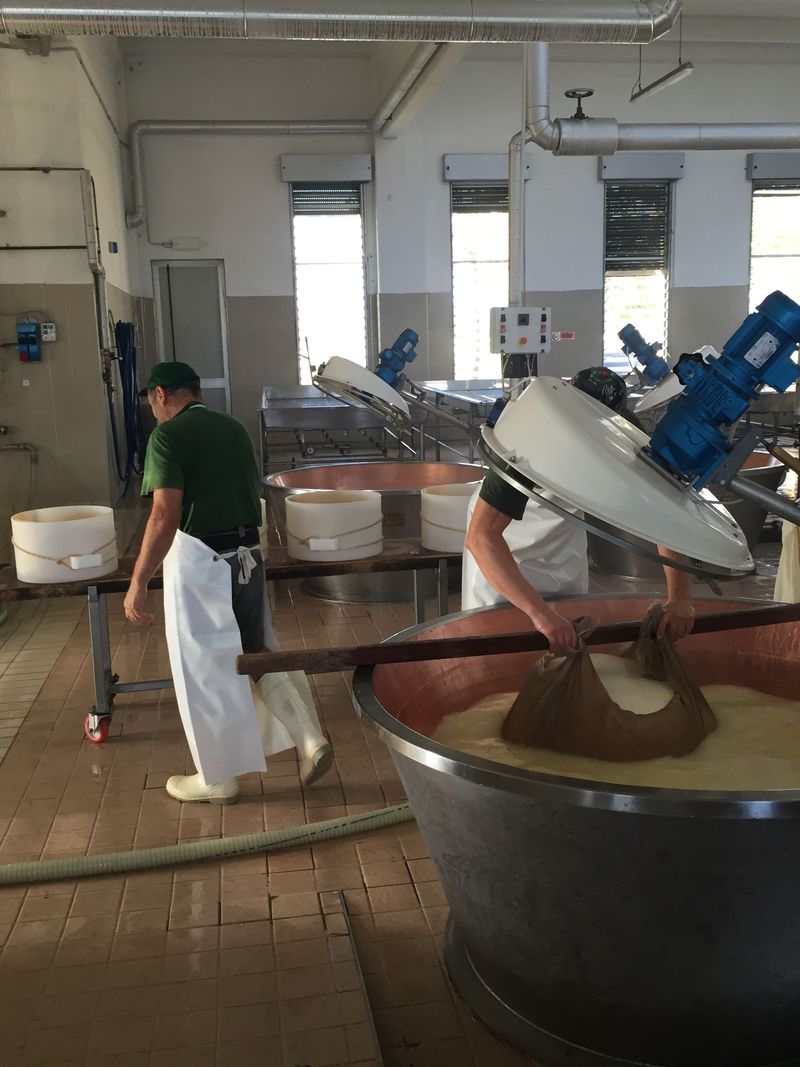
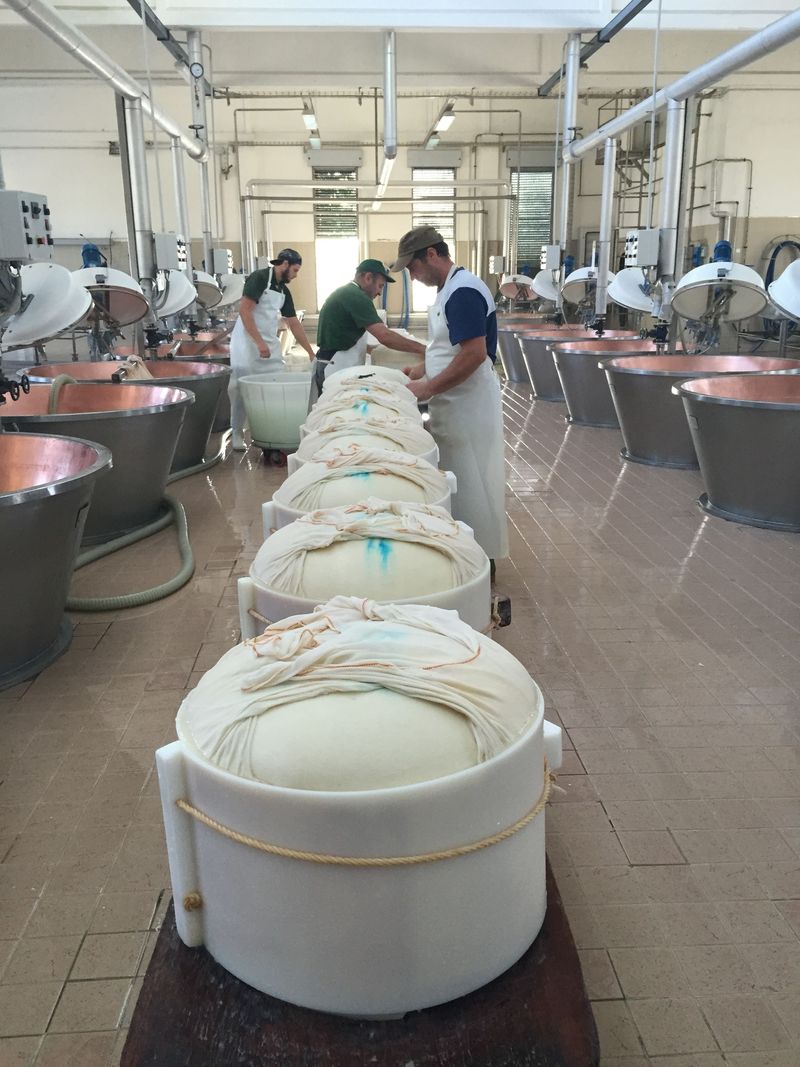
Left: Cheese about to go in its molds. Right: Cheese in its molds, with a plastic sheet with rind text hiding inset.
After the curd has separated from the whey, it is put into a plastic mold. Inset in this mold is a plastic sheet with some important information:
- The classic pinhole markings that spell out Parmigiano Reggiano
- A scramble of numbers, which is the factory's government-issued ID
- Another scramble of numbers, which corresponds with where the dairy comes from
- An empty oval: Once the cheese has been approved for sale, it will get marked as such in this oval
-
DOP, a geographical indication that points out that this product is made in Italy and under certain regulations
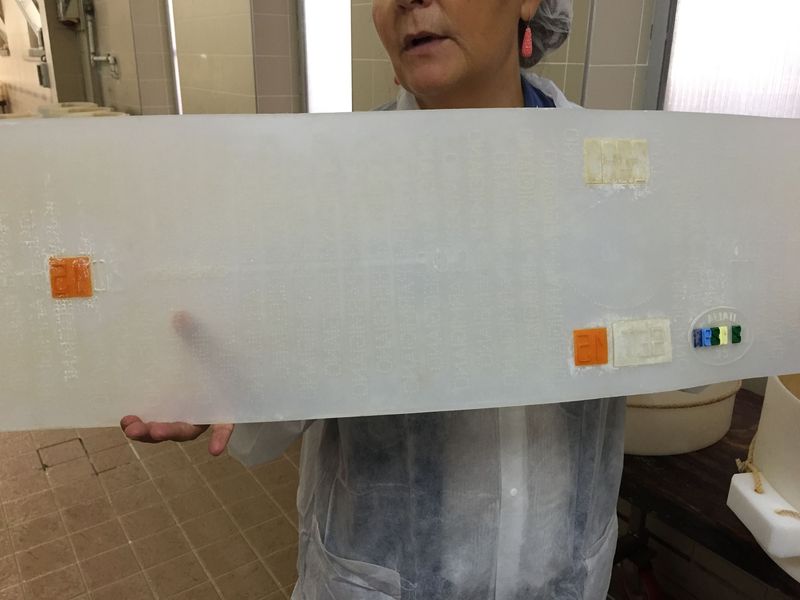
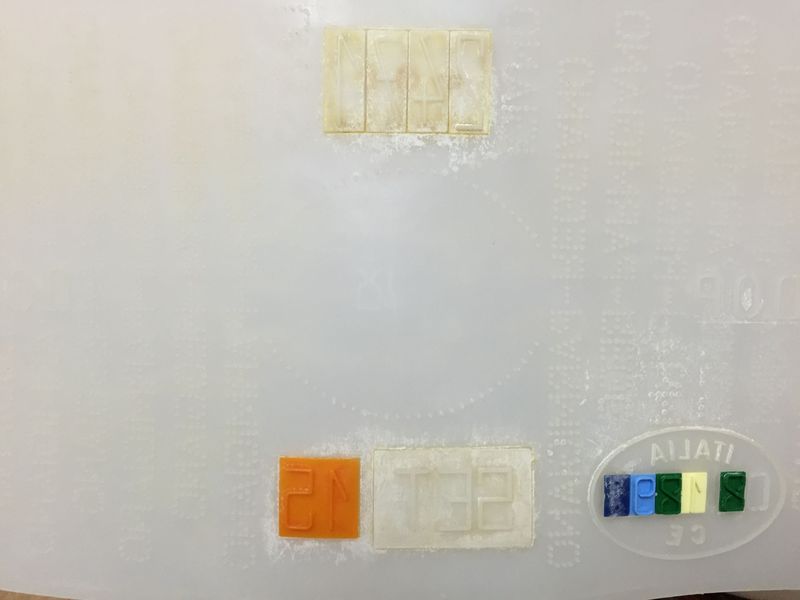
Close up of the plastic mold: Up top is Marano's code, then the clear oval, then the month and year the cheese is made. To the right of the month is the code associated with the dairy farm's ID.
You might be thinking: Parmesan rind is really tough, it must have to be impressed for a long time. But at this point, the cheese is still quite soft and yielding. The cheese only stays in its plastic girdle for 24 hours. After that, it moves to a brine solution. You'll see the text is there for good:
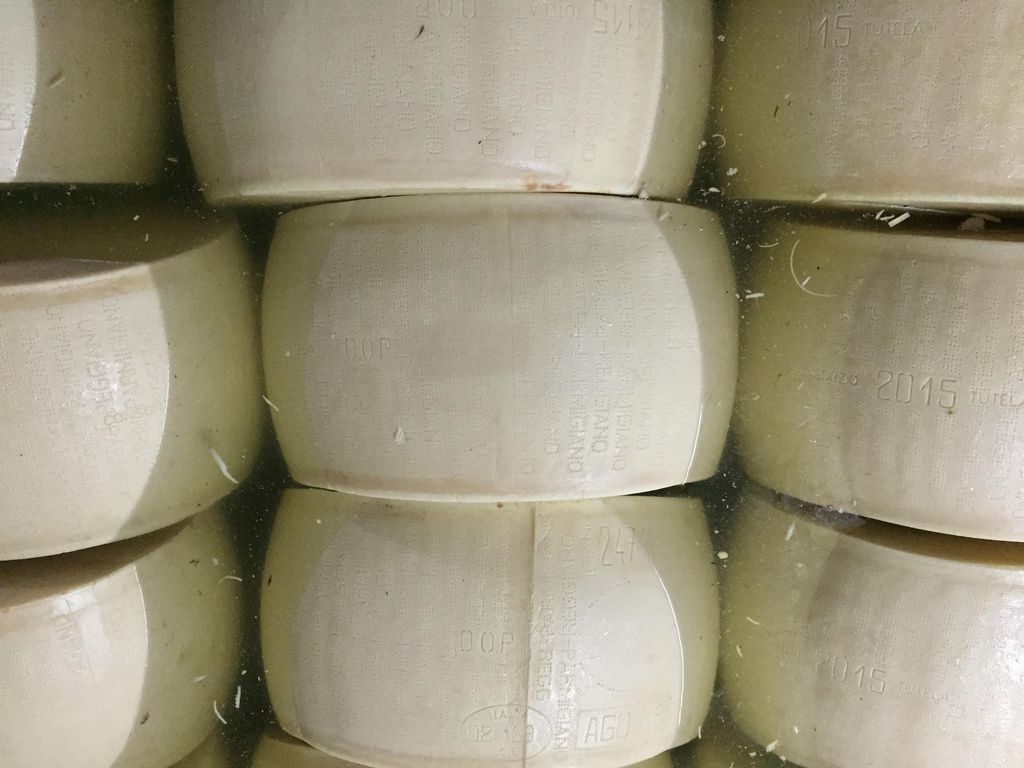
So when you're able to read the rind of your Parmesan (it depends on what piece you get), do! First, look at the date: Parmigiano-Reggiano is aged for a minimum of 12 months. At this point, it's still a bit pliable and you won't find any "spots" (the amino acid clusters responsible for that pleasant crunch) just yet.
A 24-month Parmesan is more common: At that age, it's crystally with just a bit of funk. If you get your hands on a 36-month cheese, it'll be especially biting. No one is better than any other, it's just about what you're going for. So once you've done a sufficient taste test (hard work, trust me), confirm the age of your Parmesan by looking at the rind. Also look to ensure it came from Italy and is real Parmigiano-Reggiano; that's what that DOP demarkation is.

A wheel that's ready to eat! You'll see the DOP mark and the dairy farm I.D. on the left and the factory I.D., seal of approval, and date to the right.
Tell us: What other ingredient parts are mysterious to you? We want to investigate!


See what other Food52 readers are saying.